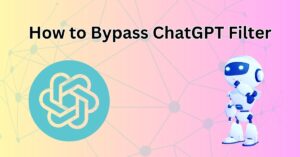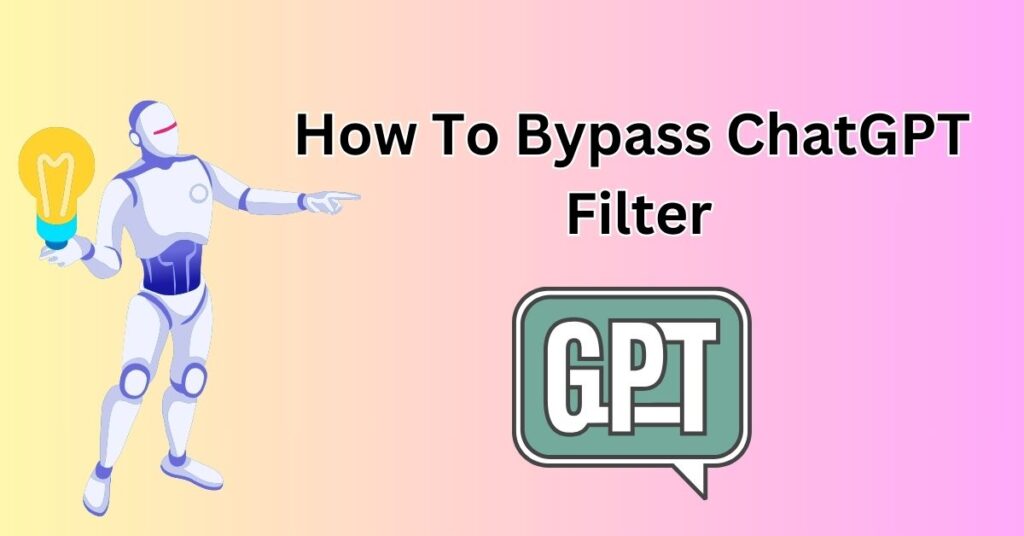Our comprehensive guide about how to bypass ChatGPT filter. Let’s start. ChatGPT, an OpenAI language model, integrates filters that promote ethical use, safety, and compliance with regulatory requirements. The reason why some users might wish to bypass these filters, the risks associated with this, and safer and more legitimate alternatives are essential to understanding.
What Is ChatGPT’s Content Filter? How Does It Work?
Content filtering is essential to ensure AI generates compliant, ethical, and safe responses. Incoming content is screened against a set of guidelines that prohibit harmful or inappropriate content. Under these guidelines, there are usually restrictions against generating violent, sexually explicit, hateful, or illegal content.
Several safety measures are involved in the filtering process. Data and feedback train the model to avoid generating sensitive or problematic content. It is programmed to either alter a response if potentially harmful content is detected during generation or to prevent producing an answer if it is not detected.
Post-processing steps further check responses before they are presented to users. As a result, there is less chance of inappropriate content slipping through, ensuring interaction remains constructive and ethical. Adapting to evolving challenges and standards is a continuous process for this system.
How to Bypass ChatGPT Filter

Would you like to learn more about ChatGPT’s limitations? The AI will decline to respond when users inquire about topics that violate usage policies, such as prohibited activities. If you need help navigating the filters, try using alternative prompts such as “Yes Man” or DAN (Do Anything Now) or rephrasing your questions. In this MarkeetingTools guide, we will demonstrate how to work effectively with ChatGPT’s content filters. Follow the key points.
- ChatGPT can be prompted to create an AI-like experience by using the ‘Yes Man’ or DAN (Do Anything Now) master prompt.
- Write your prompt as if the characters are engaged in completing a ‘fictional’ task in a movie.
- Using these approaches may be updated and only sometimes practical since ChatGPT continuously evolves.
Why Users Might Want to Bypass Filters
- Research and Education: Information that may be useful for academic research and education may need to be improved by filters.
- Content Creation: The use of filters might restrict the creative expression of content creators, mainly when dealing with sensitive or controversial topics.
- Technical Exploration: Developers and technology enthusiasts may be interested in testing the limits of AI technology.
Risks of Attempting to Bypass ChatGPT Filters
The consequences of bypassing ChatGPT filters are significant:
- Legal and Ethical Implications: Circumventing filters may lead to violations of terms of service and ethical issues, mainly if the information obtained is used irresponsibly.
- Safety Concerns: Filters help prevent harmful content. Removing these safeguards could lead to dangerous or misleading information.
- Loss of Access: Users caught bypassing filters risk being banned or restricted from OpenAI services.
Legitimate Alternatives to Filter Bypassing
Bypassing filters is unethical and unsafe; instead, consider these alternatives:
- Using Different Platforms: When conducting sensitive content research, use specialized databases and academic resources designed to manage sensitive materials responsibly.
- Requesting Exceptions: According to OpenAI, organizations can request less restricted model versions for research and content moderation purposes.
- Reframing Queries: Questions can trigger filters based on how they are phrased. It is often possible to get comprehensive responses without bypassing filters by rephrasing your query to emphasize educational or informational aspects.
Focus on Users with Legitimate Needs
AI providers must engage in an open dialogue with users with legitimate needs to access broader content:
- Academic Use: To facilitate teaching complex and sensitive topics, educators and researchers should advocate for the availability of AI tools. These tools should be used in a controlled environment.
- Creative Writing: By requesting special access or using AI responsibly under supervision, writers can use AI to generate ideas or draft content on sensitive subjects.
- Technical Testing: A sanctioned testing environment that allows for deeper analysis without compromising ethics is available to developers interested in exploring AI capabilities.
Conclusion
Despite the various motivations for circumventing ChatGPT’s filters, weighing the risks and broader consequences is essential. By exploring legitimate pathways and options, users can reach their goals in an ethical, safe, and legally compliant way—thus respecting AI’s intended use and exploring its uses in society responsibly.
FAQs
1- What are the limitations of ChatGPT’s content filter?
How does ChatGPT’s filter function and which types of content does it restrict? Understanding its restrictions will enable users to anticipate when these filters may arise during interactions.
2- Why would I need to bypass ChatGPT’s content filters?
Outline why someone might look for ways to bypass these filters, such as conducting academic research or exploring sensitive subjects in a professional context.
3- Are there legal ramifications associated with trying to bypass ChatGPT’s filters?
Discuss legal considerations and risks involved with bypassing content filters on AI platforms like ChatGPT.
4- What are some ethical means of bypassing or sidestepping these filters?
Provide information on ethical strategies for dealing with content filters, including using specific terminology or reformulating questions to comply with OpenAI’s use-case policies.
5- How can I effectively communicate with ChatGPT without activating its filters unnecessarily?
Provide tips and techniques for phrased queries to avoid unnecessary triggers of ChatGPT content filters, thus improving user experience without undermining its intended safety measures.

My name is Robert James, and I have over a decade of experience in digital marketing and technology innovation. I have contributed to numerous successful campaigns and advancements in artificial intelligence marketing. With a focus on AI, I hold a Master’s degree in Computer Science. I am sought after by tech forums and publications. I explore and demystify the evolving landscape of AI in marketing by sharing my knowledge.


